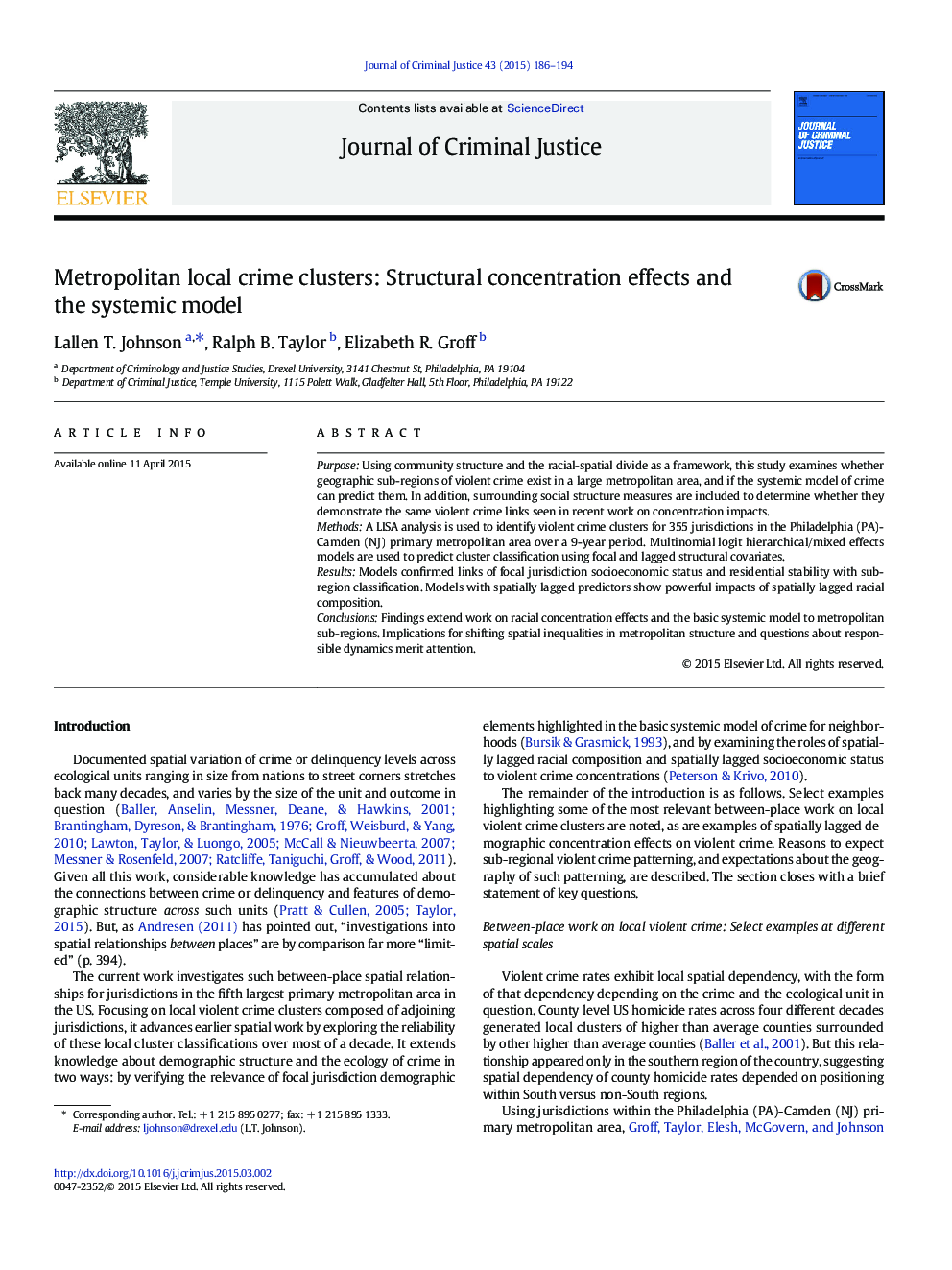| Article ID | Journal | Published Year | Pages | File Type |
|---|---|---|---|---|
| 882656 | Journal of Criminal Justice | 2015 | 9 Pages |
•Clusters of violent crime jurisdictions are identified in a large metropolitan area.•Cluster classifications are explained by the systemic model of crime.•Surrounding social structure also impacts cluster classifications.
PurposeUsing community structure and the racial-spatial divide as a framework, this study examines whether geographic sub-regions of violent crime exist in a large metropolitan area, and if the systemic model of crime can predict them. In addition, surrounding social structure measures are included to determine whether they demonstrate the same violent crime links seen in recent work on concentration impacts.MethodsA LISA analysis is used to identify violent crime clusters for 355 jurisdictions in the Philadelphia (PA)-Camden (NJ) primary metropolitan area over a 9-year period. Multinomial logit hierarchical/mixed effects models are used to predict cluster classification using focal and lagged structural covariates.ResultsModels confirmed links of focal jurisdiction socioeconomic status and residential stability with sub-region classification. Models with spatially lagged predictors show powerful impacts of spatially lagged racial composition.ConclusionsFindings extend work on racial concentration effects and the basic systemic model to metropolitan sub-regions. Implications for shifting spatial inequalities in metropolitan structure and questions about responsible dynamics merit attention.
